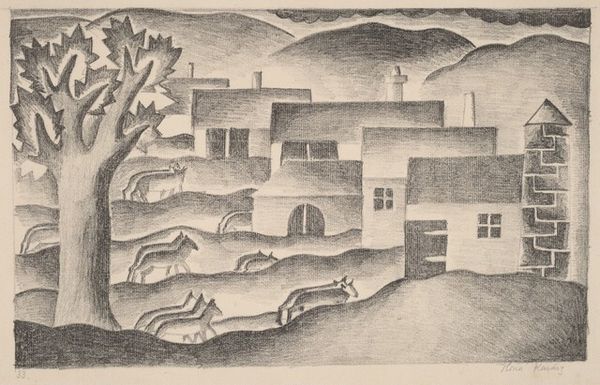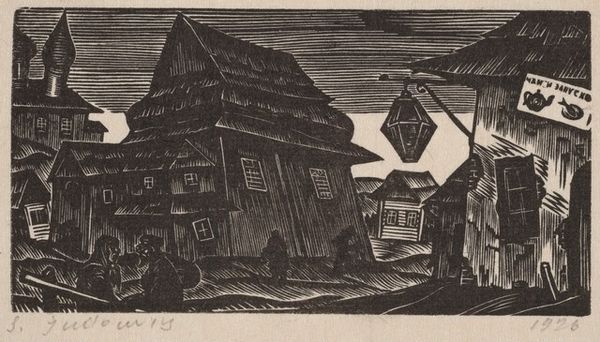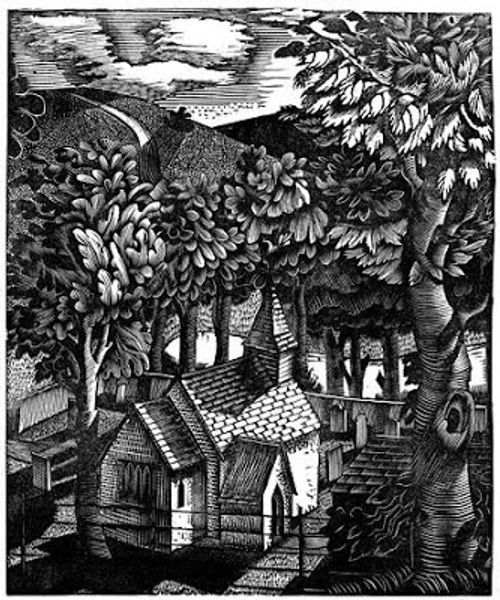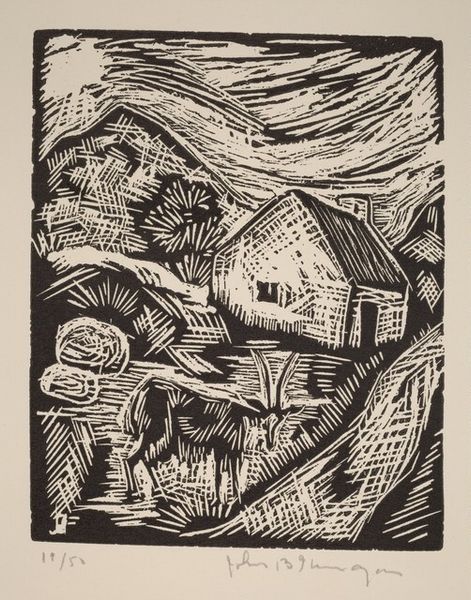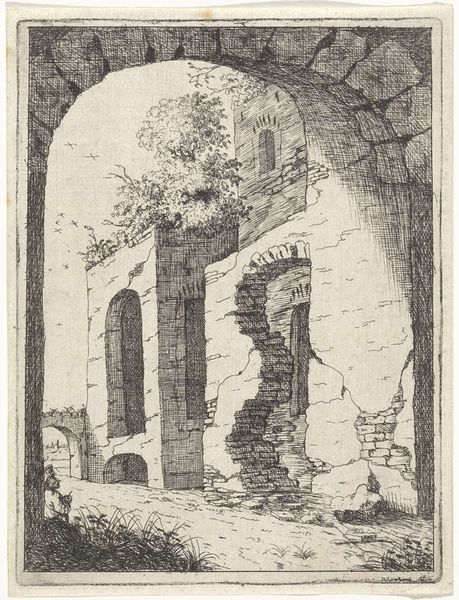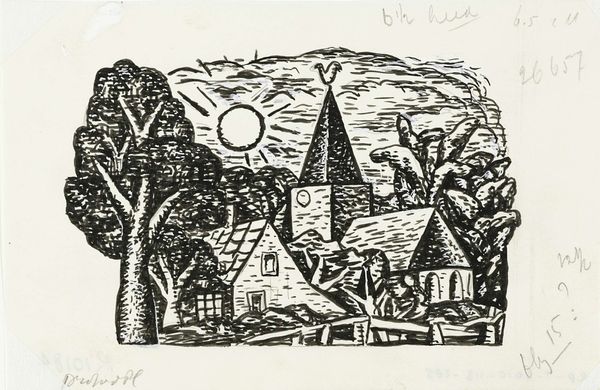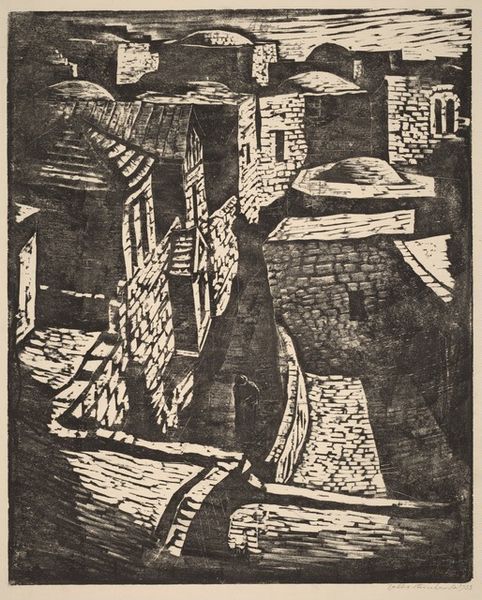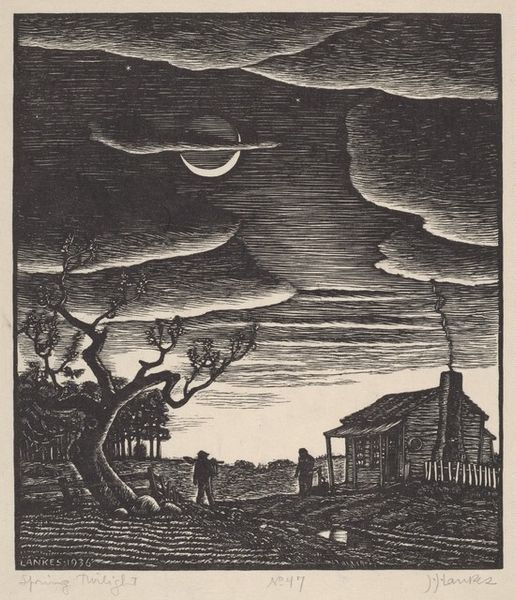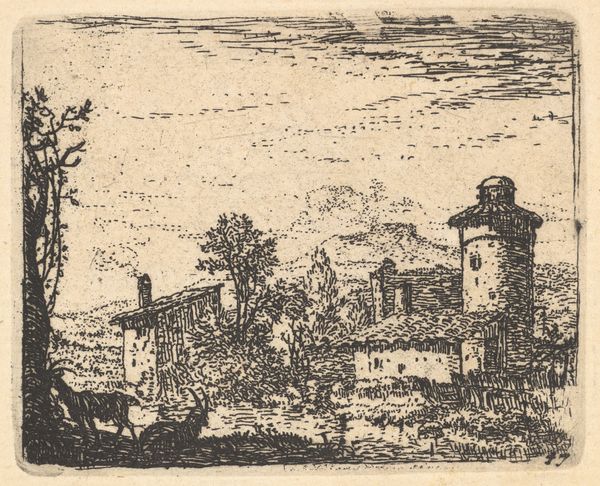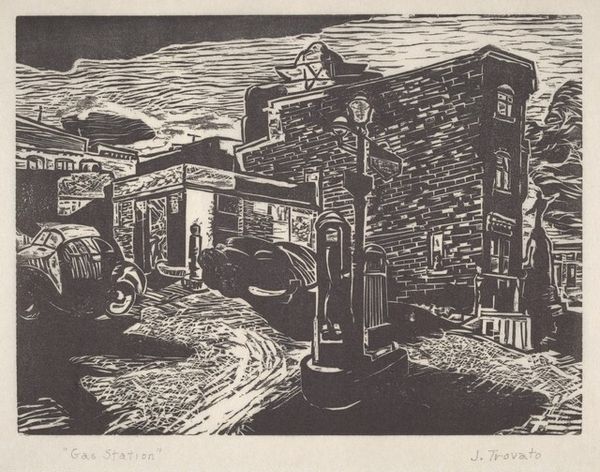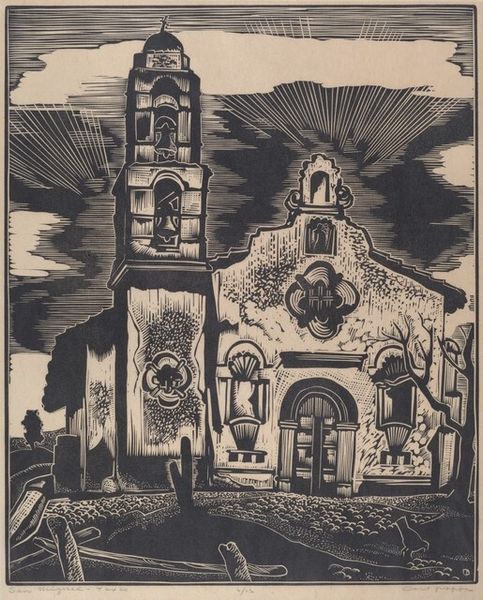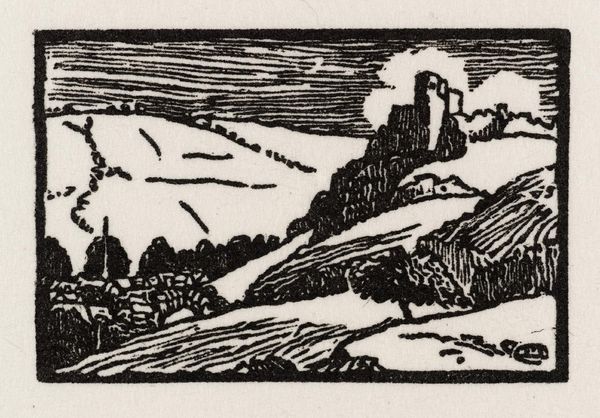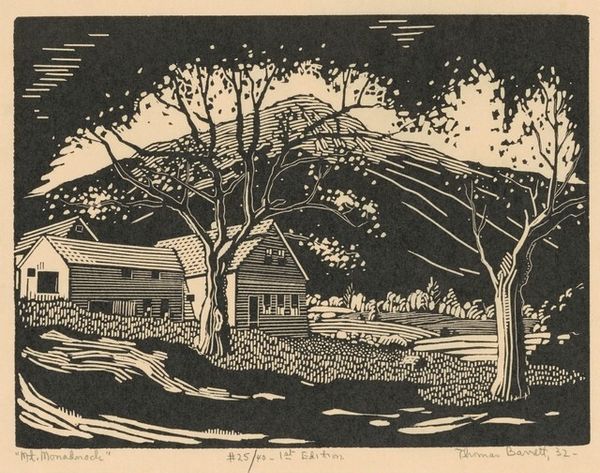
print, woodcut
#
narrative-art
# print
#
landscape
#
woodcut
#
regionalism
Dimensions: image: 22.54 × 30 cm (8 7/8 × 11 13/16 in.) sheet: 30.32 × 37.94 cm (11 15/16 × 14 15/16 in.)
Copyright: National Gallery of Art: CC0 1.0
Curator: Birger Sandzén’s "Old Powder House, Central City," a woodcut created in 1933, depicts a rugged landscape punctuated by the stark geometry of the powder house itself. What's your first take? Editor: It strikes me as simultaneously desolate and resilient. The texture achieved through the woodcut process emphasizes the harshness of the environment, but the structure stands firm. I'm interested in the physicality of the image and how that conveys narrative. Curator: Sandzén was part of the Regionalist movement, capturing the essence of the American landscape, particularly the West. The powder house isn't merely a building; it represents the boom and bust cycles tied to resource extraction and, perhaps, speaks to the broader societal dependence on exploitative industries. What communities did Sandzén engage with? Editor: The materiality speaks to that boom and bust as well. Woodcuts are inherently process-oriented, a manual form of production. Sandzén likely engaged with printmaking communities. Consider the physical labor involved in carving the block to make it ready for print, compared to painting for example—how does that align with the subject matter of labor? Curator: It introduces an interesting dichotomy: the controlled, careful labor of the artist mirroring, in some ways, the often dangerous and unregulated labor practices that shaped the very landscapes Sandzén depicted. How might the symbolism of the 'Old Powder House' resonate given this perspective on the intersection of artistic labour and physical exploitation? Editor: I think by grounding the work in materiality we can see those parallels much clearer. It's not simply a representation, but an echo of processes, both artistic and industrial. Curator: A fitting testament to the complex relationship between humans and their environment— both the one the landscape yields, and the economic structures of work that it has been used for and extracted from. Editor: A visual story indeed! One told not only through the depicted image, but also through the active construction of image-making itself.
Comments
No comments
Be the first to comment and join the conversation on the ultimate creative platform.

